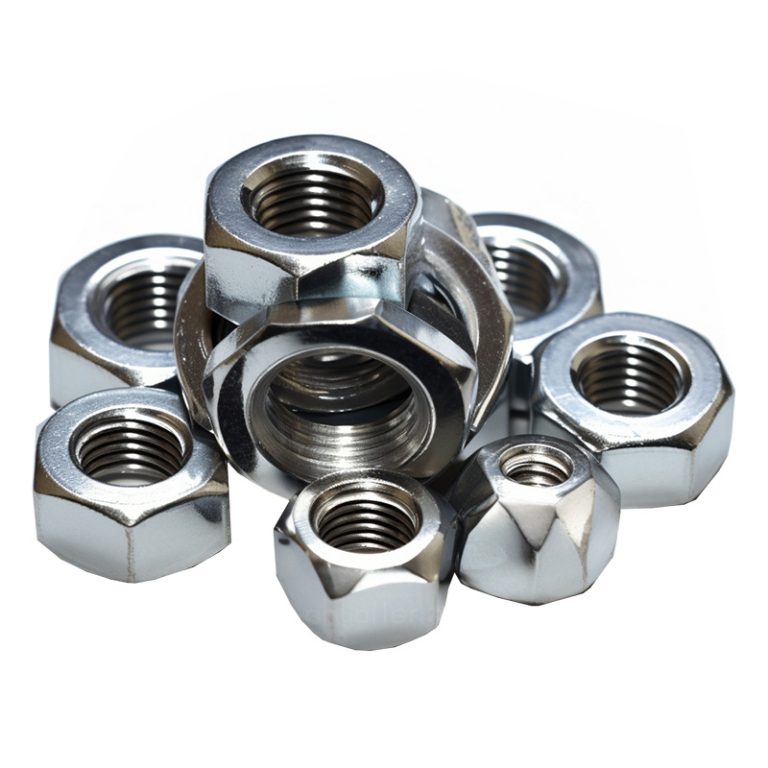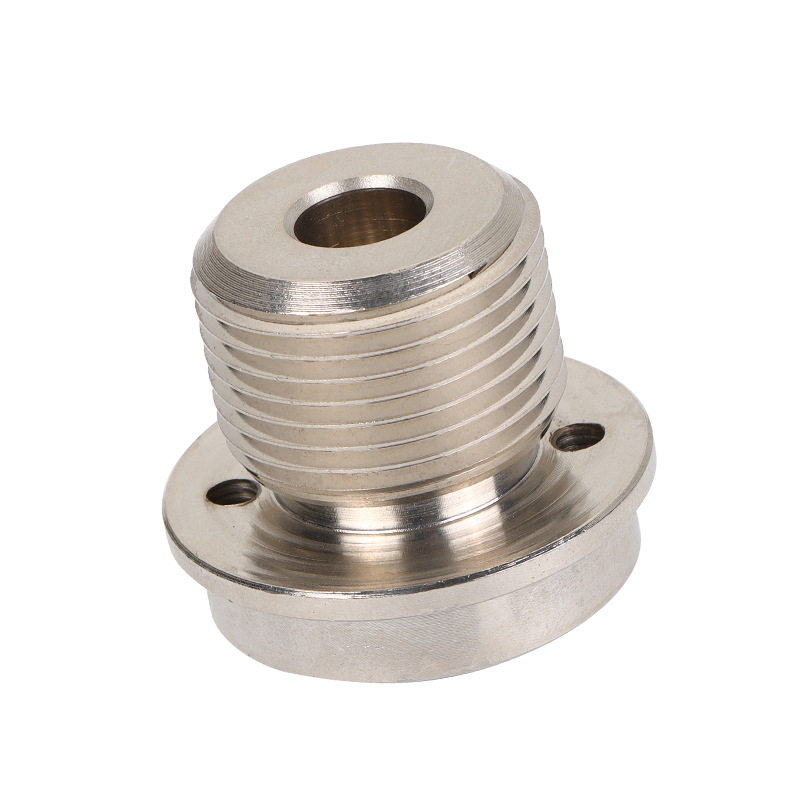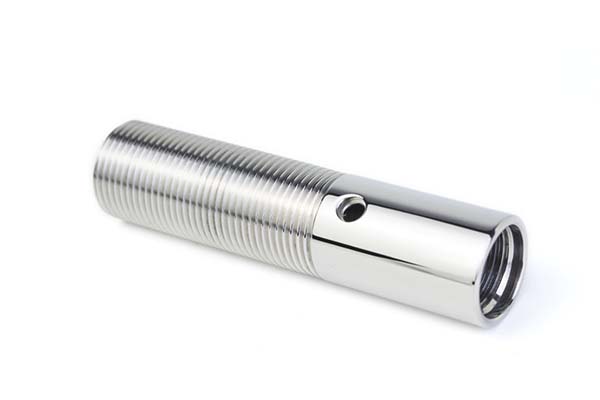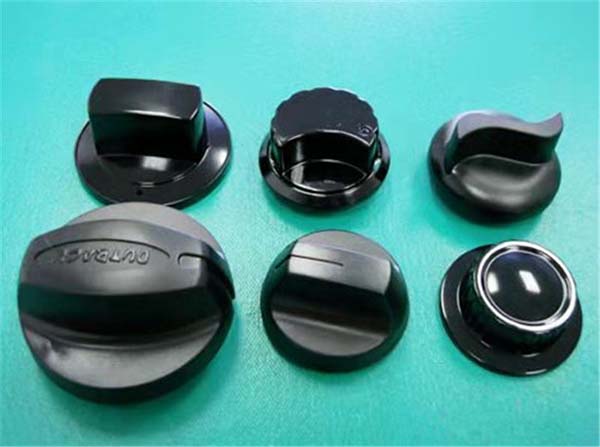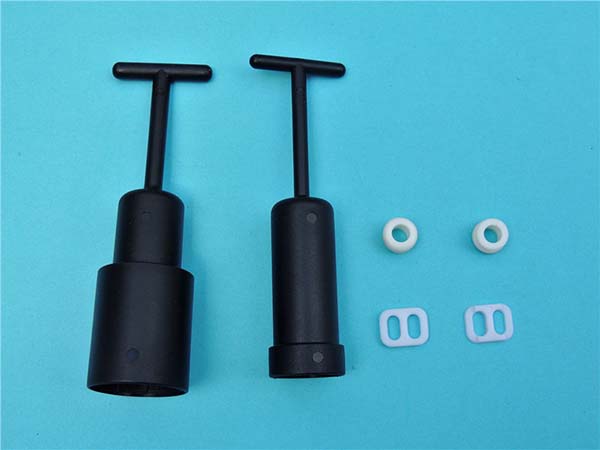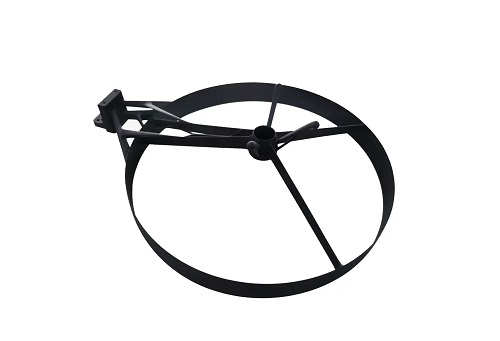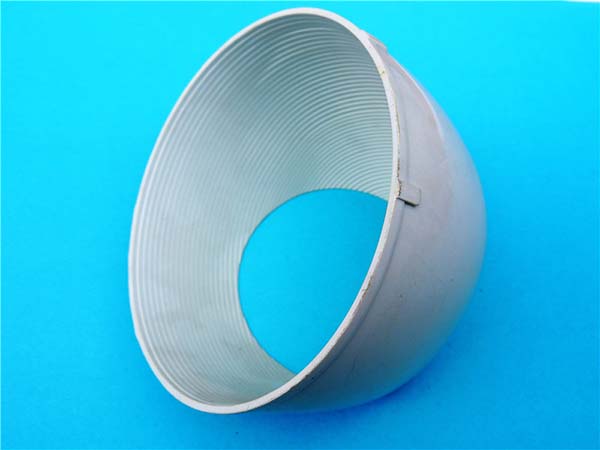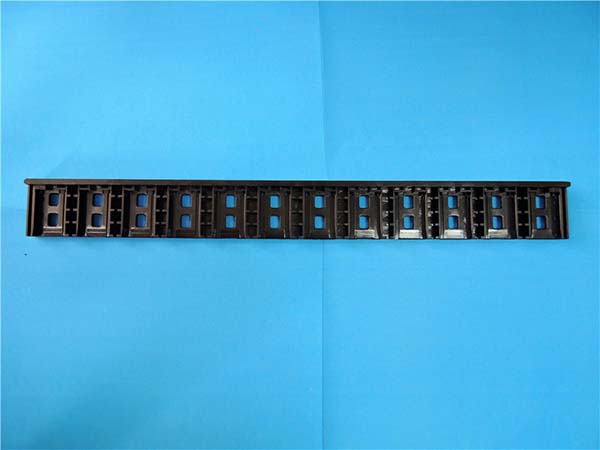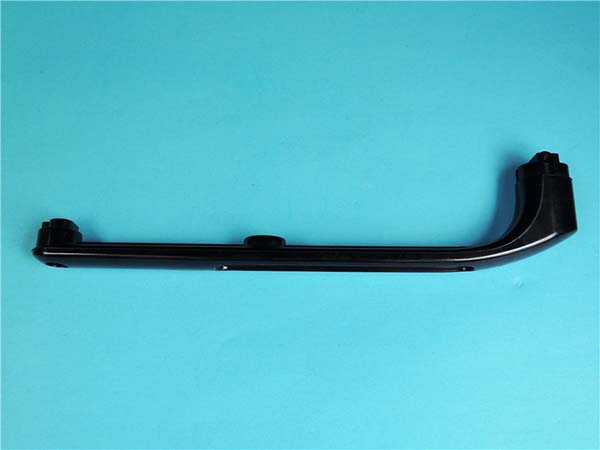Introduction to SLA 3D Printing
SLA, short for Stereolithography, is a pioneering and widely - used 3D printing technology. It was invented by Charles Hull in 1983 and later patented in 1986. This technology marks a significant milestone in the 3D printing realm, being the first to achieve commercialization, which has laid a solid foundation for the development of modern 3D printing.
The Principle of SLA 3D Printing
At its core, SLA 3D printing operates based on photopolymerization. It uses a light source, typically a ultraviolet (UV) laser, to selectively cure a liquid photopolymer resin. The process begins with a 3D model created in a Computer - Aided Design (CAD) software. This model is then sliced into numerous thin cross - sectional layers by specialized software.
The SLA printer has a build platform that is initially positioned at the surface of the liquid resin tank. The UV laser beam is precisely focused and scanned across the surface of the resin according to the pattern of the first cross - sectional layer of the 3D model. As the laser strikes the resin, it causes a chemical reaction called photopolymerization, where the resin molecules link together to form a solid polymer. This solidified layer adheres to the build platform.
After the first layer is completed, the build platform is lowered by a small distance, typically in the range of 0.05 - 0.2 mm, depending on the desired resolution. A new layer of liquid resin then flows over the previously cured layer. The laser scans again to cure the next layer, bonding it firmly to the previous one. This process of layer - by - layer curing continues until the entire 3D object is constructed.
For Yigu Technology example, if you are printing a small figurine, the SLA printer will start by creating the base layer of the figurine's feet. As the layers are added one by one, the legs, torso, arms, and head are gradually formed, with each new layer fusing to the ones below it to create a seamless, three - dimensional structure.
Advantages of SLA 3D Printing for Projects
The following Yigu Technology table summarizes the advantages of SLA 3D printing compared to some other common 3D printing technologies:
| Comparison Aspect | SLA | FDM | SLS |
| Precision (X/Y axis) | ±0.05 - ±0.1mm | ±0.1 - ±0.3mm | ±0.1 - ±0.3mm |
| Precision (Z axis) | ±0.05 - ±0.1mm (layer thickness as thin as 0.025mm) | ±0.2 - ±0.5mm | ±0.2 - ±0.4mm |
| Surface Finish | Smooth, minimal post - processing | Layer - by - layer texture, requires more post - processing | Moderate, may need some post - processing |
| Ability to Handle Complex Geometries | Excellent, can create internal cavities and undercuts easily | Limited, may require support structures and complex assembly for complex geometries | Good, but support removal can be challenging for complex parts |
| Material Versatility | Wide range of photopolymer resins with different properties | Mainly thermoplastic filaments like PLA, ABS | Powder materials with a variety of properties, but limited compared to SLA resins |
Real - World Case Studies of SLA 3D Printing in Projects
Case 1: Product Design and Prototyping in the Consumer Electronics Industry
A well - known consumer electronics company was developing a new - generation smartphone. The design team had come up with an innovative and sleek design for the phone's exterior, which included complex curves and a unique camera module layout. However, traditional prototyping methods presented several challenges.
Using traditional injection - molding techniques for prototyping would have required the creation of expensive molds. The design process often involves multiple iterations, and creating molds for each iteration is time - consuming and costly. A single mold for a smartphone case could cost tens of thousands of dollars, and the lead time for mold fabrication could be several weeks.
This is where SLA 3D printing came to the rescue. The design team first created a 3D model of the smartphone case in CAD software. They then sent the model to an SLA 3D printer. With a layer thickness of 0.05mm, the SLA printer was able to accurately reproduce the complex curves and details of the design.
The first SLA - printed prototype was ready within 24 hours. The team could immediately start conducting design verification tests. They checked the ergonomics of the phone by having users hold and interact with the prototype. The precise dimensions of the SLA - printed prototype allowed for accurate fitting of internal components such as the battery, motherboard, and display.
Based on the feedback from the initial tests, the design team made several modifications to the 3D model. They adjusted the curvature of the edges for a more comfortable grip and optimized the placement of the camera module for better functionality. These changes were quickly implemented in the CAD model, and new SLA - printed prototypes were produced within a day.
Thanks to SLA 3D printing, Yigu Technology was able to go through five design iterations in just one week. In contrast, with traditional prototyping methods, the same number of iterations would have taken at least two months. This significantly shortened the product development cycle. The new smartphone was launched in the market three months earlier than originally planned, giving the company a competitive edge. It also saved the company approximately $200,000 in prototyping costs by eliminating the need for multiple expensive injection - molding molds.
Case 2: Custom - Made Jewelry Production
A high - end jewelry brand wanted to offer more personalized jewelry options to its customers. Traditional jewelry manufacturing methods for custom pieces were time - consuming and often limited in design complexity.
When a customer requested a custom - designed engagement ring, the process usually started with a hand - drawn sketch by a designer. Then, a wax model was hand - carved by a skilled artisan, which could take several days. If there were any changes to the design, the entire wax - carving process might need to be redone.
The jewelry brand decided to adopt SLA 3D printing technology. When a customer placed an order for a custom ring, the design team first used 3D modeling software to create a detailed digital model of the ring based on the customer's preferences. The model could include intricate filigree patterns, unique gemstone settings, and personalized engravings.
The digital model was then sent to an SLA 3D printer. Using a high - resolution SLA printer with a resolution of 25μm in the XY plane, the printer was able to create a highly detailed wax - like resin model of the ring. The printing process took only a few hours.
After the SLA - printed model was complete, it underwent a post - curing process to enhance its strength. The model was then used in the traditional lost - wax casting process to create the final metal ring. The SLA - printed model was so accurate that the casting process had a high success rate, reducing material waste.
This new process not only increased the production efficiency but also allowed for more complex and unique designs. The brand saw a 40% increase in custom - jewelry orders within the first year of implementing SLA 3D printing. Customers were delighted with the ability to have truly one - of - a - kind jewelry pieces, and the brand's reputation for innovation and customization was significantly enhanced.
Factors to Consider When Using SLA 3D Printing for Projects
Material Selection
- Resin Properties:
- Mechanical Properties: Different photopolymer resins have varying mechanical properties. Rigid resins are suitable for applications where high strength and stiffness are required. For example, if you are printing a structural component for a small - scale robotic arm, a rigid resin with a high Young's modulus can ensure that the component can withstand the forces exerted during the arm's movement without significant deformation. On the other hand, flexible resins are ideal for parts that need to bend or flex, such as a flexible gasket or a shock - absorbing element. These flexible resins have a higher elongation at break, allowing them to stretch without breaking.
- Thermal Properties: Consider the temperature conditions the printed part will be exposed to. High - temperature - resistant resins are available for applications in automotive engines or aerospace components, where the parts may experience elevated temperatures. These resins can maintain their mechanical properties and dimensional stability at high temperatures. For Yigu Technology instance, in an aircraft engine, components printed with high - temperature - resistant resins can operate reliably in the hot environment of the engine's combustion chamber.
- Optical Properties: For applications like lenses, light - diffusing components, or transparent enclosures, transparent resins with good optical clarity are essential. These resins should have low light absorption and scattering properties to ensure that light can pass through them with minimal distortion. In the production of LED light covers, a transparent resin with high optical quality can evenly distribute the light emitted by the LED, enhancing the overall lighting effect.
- Compatibility with the Printer:
- Viscosity: Resin viscosity is an important factor. Printers are designed to work with resins within a certain viscosity range. A resin that is too viscous may not flow smoothly during the printing process, leading to issues such as uneven layer deposition or blockages in the resin circulation system. Conversely, a resin that is too thin may cause problems with layer adhesion and may result in a lack of structural integrity. For example, some high - resolution SLA printers are optimized for low - viscosity resins to enable faster and more precise printing of fine details.
- Curing Characteristics: Different resins may have different curing requirements in terms of the wavelength and intensity of the UV light source. It is crucial to ensure that the resin is compatible with the printer's UV light system. Some resins may require a specific range of UV wavelengths for efficient photopolymerization. If the printer's UV light source does not match the resin's curing requirements, the resin may not cure properly, resulting in a failed print.
Printer - Related Considerations
- Printer Resolution:
- XY Resolution: The XY resolution of an SLA printer determines the level of detail that can be achieved in the horizontal plane. A higher XY resolution, such as 25μm or lower, allows for the creation of smaller features and more intricate patterns. For example, when printing a micro - mechanical component with tiny gears or a detailed jewelry piece with fine filigree work, a high - resolution printer can accurately reproduce the small details. A lower - resolution printer may result in rounded edges or a loss of fine features.
- Z - Axis Resolution (Layer Thickness): The layer thickness in the Z - axis affects the smoothness of the printed object's surface and the overall accuracy in the vertical direction. Thinner layer thicknesses, such as 0.025 - 0.05mm, result in a smoother surface finish and better representation of vertical features. However, printing with very thin layers can also increase the printing time significantly. For a high - precision dental model, a thin layer thickness is preferred to accurately capture the details of the teeth and gums, but for a large - scale, less - detailed prototype, a slightly thicker layer thickness may be acceptable to reduce the printing time.
- Build Volume:
- Size Limitations: The build volume of an SLA printer restricts the maximum size of the objects that can be printed. It is important to ensure that the 3D model of the object fits within the printer's build volume. For example, if you are planning to print a large - scale architectural model, you need to choose a printer with a sufficient build volume to accommodate the model. Some industrial - grade SLA printers have large build volumes, while desktop - sized SLA printers are more suitable for smaller objects.
- Multiple Small Parts: If you need to print multiple small parts, you can optimize the use of the build volume by arranging the parts efficiently in the printer's workspace. This can save time and material as multiple parts can be printed simultaneously. For instance, when printing a batch of small mechanical parts for a watch, you can arrange them in a way that maximizes the use of the build volume, reducing the number of printing runs required.
- Printer Maintenance:
- Resin Tank and Platform Maintenance: The resin tank needs to be cleaned regularly to prevent the accumulation of cured resin residues. These residues can affect the accuracy of the printing and the flow of the fresh resin. The build platform also requires proper maintenance to ensure good adhesion of the printed parts. For example, the platform may need to be leveled periodically, and any scratches or debris on the platform surface should be removed to ensure consistent adhesion.
- Laser and Optics Maintenance: The UV laser and the optical components of the SLA printer are critical for the printing process. The laser's power output should be monitored regularly, and the optical lenses and mirrors need to be kept clean to ensure accurate focusing and scanning of the laser beam. Over time, dust and resin particles can accumulate on these components, reducing the printer's performance. For example, a dirty mirror may cause the laser beam to deviate from its intended path, resulting in inaccurate printing.
Post - Processing Requirements
- Support Structure Removal:
- Complexity of Supports: SLA - printed objects often require support structures to hold the parts in place during the printing process, especially for parts with overhangs or complex geometries. The removal of these support structures can be a time - consuming and delicate process. The complexity of the support structures depends on the design of the 3D model. For Yigu Technology example, a part with multiple undercuts and large overhangs will require more extensive support structures, and removing them without damaging the main part can be challenging.
- Tools and Techniques: Appropriate tools such as pliers, tweezers, and cutters are needed to remove the support structures. In some cases, chemical or mechanical methods may be used to facilitate the removal. For example, soaking the printed part in a solvent that can soften the support material (while not affecting the main part) can make the support removal easier. However, care must be taken to ensure that the solvent does not damage the printed object.
- Surface Finishing:
- Sanding and Polishing: Although SLA - printed parts generally have a smooth surface, additional sanding and polishing may be required to achieve a high - gloss or ultra - smooth finish. Sanding can be used to remove any small imperfections or rough spots on the surface, while polishing can enhance the shine and smoothness. For example, in the production of a high - end consumer product prototype, such as a luxury watch case, sanding and polishing can give the part a more refined and professional appearance.
- Painting and Coating: Depending on the application, the SLA - printed part may need to be painted or coated. Painting can be used to add color, protect the surface, or enhance the aesthetic appeal of the part. Coating can provide additional properties such as corrosion resistance or increased hardness. For example, a 3D - printed metal replacement part for an outdoor application may be coated with a corrosion - resistant layer to prevent rusting.
- Curing and Hardening:
- Post - Curing: After the initial printing, some parts may require post - curing to fully harden the resin and improve its mechanical properties. Post - curing can be done using additional UV light exposure or heat treatment, depending on the type of resin. For example, a biocompatible resin used for printing dental prosthetics may need to be post - cured to ensure that it meets the required strength and durability standards for use in the mouth.
- Monitoring and Control: The curing and hardening process need to be carefully monitored to avoid over - curing or under - curing. Over - curing can make the part brittle, while under - curing can result in a part with insufficient strength. For example, using a UV curing chamber with adjustable light intensity and exposure time can help ensure proper post - curing of the printed parts.
Conclusion
In Yigu Technology conclusion, SLA 3D printing stands as a powerful and versatile technology with remarkable potential for a wide array of projects. Its high precision and resolution, smooth surface finish, ability to handle complex geometries, and material versatility give it a distinct edge over many other 3D printing technologies.
As demonstrated by the real - world case studies, SLA 3D printing can significantly enhance the efficiency and quality of product development in various industries, from consumer electronics and jewelry to aerospace. It enables faster prototyping, reduced costs, and the realization of innovative designs that were previously challenging or impossible to achieve with traditional manufacturing methods.
FAQ
1. What are the most common materials used in SLA 3D printing?
The most common materials are photopolymer resins, including rigid resins for high - strength applications, flexible resins for parts needing flexibility, transparent resins for optical components, and biocompatible resins for medical uses.
2. How accurate is SLA 3D printing?
In the X and Y axes, SLA printers can achieve an accuracy of ±0.05 - ±0.1mm, and in the Z - axis, the layer thickness can be as thin as 0.025mm in some high - end printers, resulting in high - precision prints.
3. What post - processing is usually required for SLA 3D - printed parts?
Common post - processing steps include support structure removal, which may involve using tools like pliers and tweezers; surface finishing such as sanding, polishing, painting, or coating; and curing and hardening, often through additional UV light exposure or heat treatment.
